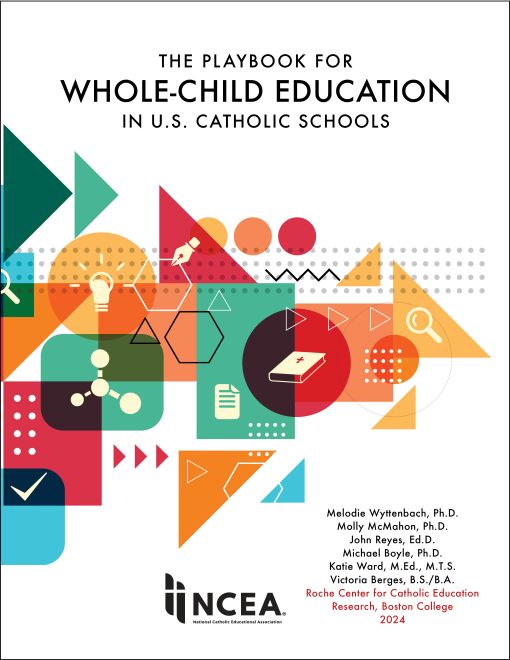Can you embrace the challenge of starting a discipling format for student formation at your school?
Written by Father Tom Simonds, SJ, Ed.D., director of school engagement, NCEA, [email protected]
In an earlier blog post in this faith-formation series, I presented a challenge to PK–12 Catholic school educators. The challenge is to implement a discipling model of education and formation in Catholic schools. The word, “discipling,” is a verb that means to mentor someone who desires to become a disciple of Jesus.
Can you embrace the challenge of starting a discipling format for student formation at your school? In this blog post, my goal is to trace a path forward for those Catholic school educators who embrace the challenge of implementing a discipling model of education in their schools.
Identifying a Master Disciple
The first step on the path to develop a discipling model of education is to identify one or two master disciples in the school community. A master disciple is someone who has been living the Catholic faith in a parish community and in the school for a number of years. The master disciple will have received all three Sacraments of Initiation: Baptism, Holy Eucharist, and Confirmation. The master disciple will be living out their call to serve, received through the Sacraments of Initiation, in the parish, the community, and the school. This service will provide a way for the master disciple to share the gifts of the Holy Spirit they have been given for the building up of the Catholic community (1 Corinthians 12:4–7).
Those members of the community who have been ordained as a priest or deacon have received special gifts of the Spirit they can offer to the community, perhaps as a master disciple, or perhaps as an advisor for a master disciple. Vowed religious also have special gifts to offer to schools where they minister.
When the members of the school community ask themselves who is a master disciple within their community, the person or persons will likely stand out because of their witness to a life of prayer, service, and parish involvement. The master disciple also needs to have the gift of being able to mentor others as disciples of Jesus. This final gift may be more difficult to identify, but through discerning prayer, leaders at the school in collaboration with other members of the community will be able to identify which persons in the community have the gifts needed to be a master disciple.
Supporting the Discipling Process
Once the school community has identified one or more master disciples, the school leadership team will need to consider how the school will support the discipling work. The master disciple’s key role will be to guide leaders, board members, faculty, and staff as they become disciples of Jesus or grow in their discipleship. This work will require time for the master disciple and those being discipled to meet for spiritual conversation and guidance, to worship and pray together, and to help those in need.
Teachers participating in this formation process will be able to share with their peers the ways they are inviting students and families into a discipling process. As Pope Francis stated in his Apostolic Exhortation, Christus Vivit (Christ is Alive!), peer-to-peer ministry can be a very powerful way for students to walk the path of discipleship together, and teachers can use this model in their efforts to invite students and families to participate in formation as disciples of Jesus.
Ultimately, our goal is to prepare our students to be Christian leaders in their community and engaged members of their local parishes. To achieve this goal, our students must be inspired by what is good, beautiful, and true. When students experience true goodness, beauty, and truth, they are inspired to live their Catholic faith in new and exciting ways with their eyes on what endures!
A Real-Life Example
Kelly Laster of the Diocese of Austin led the development of discipleship activities for students in grades 3 – 12, based on the social teachings of the Catholic Church. Her work is an example of embracing a new faith-formation model for our students in Catholic schools. You can read about her efforts in her spring 2024 Momentum article, “Aligning Catholic Social Teaching to Lived Experience”. Log in to www.NCEA.org/Momentum to search the archive. Additional information is available on the Diocese of Austin website.
Perhaps you have a new student faith-formation initiative to share with us as well? If so, please contact me at [email protected].
Missed part one in this series? Check it out now.

June 18, 2025
















